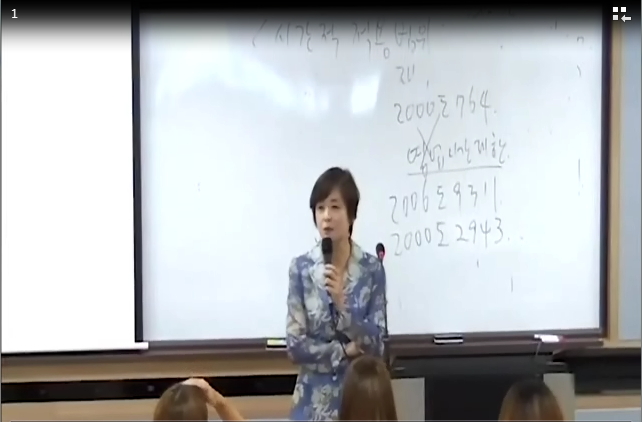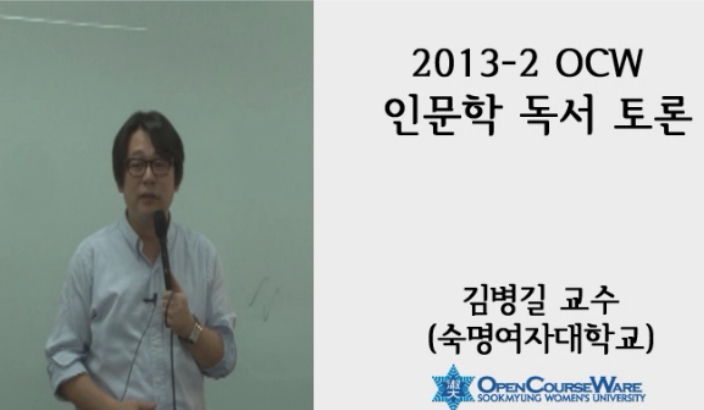The argument is a way of communication in which the pros andcons consider the problem of different fronts that they come tounderstand the problem and solve it. The argument used to developthe capacity of expression, that is, the ability to speak, list...
http://chineseinput.net/에서 pinyin(병음)방식으로 중국어를 변환할 수 있습니다.
변환된 중국어를 복사하여 사용하시면 됩니다.
- 中文 을 입력하시려면 zhongwen을 입력하시고 space를누르시면됩니다.
- 北京 을 입력하시려면 beijing을 입력하시고 space를 누르시면 됩니다.
칼 포퍼형 토론을 응용한 토론 발언의 분석과 이해-<사형제 폐지> 토론 사례를 중심으로- = Analysis of Argument -A Case of the Debate on the Abolition of Death Penalty
한글로보기부가정보
다국어 초록 (Multilingual Abstract)
In the academic debate, each debater is speaking according to thedetermined length, order and role. It contains different kinds of as theintroductory argument, interactive questions, protest arguments, etc..
The academic debate contains different kinds of arguments as theintroductory argument, interactive questions, protest arguments, etc.
What is the role and nature of each argument? How can we prepareeach stage of the argument? For that purpose, we tried to analyse thenature and characteristics of each stage of discussion through theexample of a debate on the abolition of the death penalty in thecourse of <Thinking and Expression>. Through this work, weunderstand the role and nature of each stage of the debate andespecially the importance of the interaction that binds the argumentswith each other conferring the true meaning of each argument.
The argument is a way of communication in which the pros andcons consider the problem of different fronts that they come tounderstand the problem and solve it. The argument used to developthe capacity of expression, that is, the ability to speak, listen andwrite, and read. The argument can also explore the plural andintegrative thinking. Throughout the argument, the debater learns tolisten carefully to the words of his opponent, to correct his ownopinion and to persuade his opponent with his arguments so that hecan develop critical thinking ability. Therefore, the importance of theargument is becoming more significant.
In the academic debate, each debater is speaking according to thedetermined length, order and role. It contains different kinds of as theintroductory argument, interactive questions, protest arguments, etc..
The academic debate contains different kinds of arguments as theintroductory argument, interactive questions, protest arguments, etc.
What is the role and nature of each argument? How can we prepareeach stage of the argument? For that purpose, we tried to analyse thenature and characteristics of each stage of discussion through theexample of a debate on the abolition of the death penalty in thecourse of <Thinking and Expression>. Through this work, weunderstand the role and nature of each stage of the debate andespecially the importance of the interaction that binds the argumentswith each other conferring the true meaning of each argument.
국문 초록 (Abstract)
아카데미 토론에서는 정해진 절차의 발언의 종류와 순서, 역할과 시간에 따라자신에게 주어진 발언을 하게 된다. 토론을 통하여 발언자는 나와 다른 의견을 경청하여 들으며 나와 다른 생각을 이해하고 포용하는 것과 동시에 자신의 생각을수정하고 또한 자신의 입장을 상대방에게 설득하기 위해 논거를 제시하고 질문하고 반론을 하는 과정에서 비판적이고 종합적인 사고력과 설득력과 논리적인 표현력을 기를 수 있다. 포퍼 형 토론과 같은 아카데미 토론은 입론, 확인질문, 반론과 같은 발언들로 채워진다. 각각의 발언은 어떤 역할을 하며 어떻게 발언을 구성하여야 할 것인가? 우리는 형식 토론의 발언의 성격에 대한 분석과 이해를 도모하기 위해 2010년 <사고와 표현 2> 수업에서 포퍼 형 토론 방식을 응용한 아카데미토론 방식에 따라 진행한 토론의 구체적인 사례에 나타난 개별 발언의 종류별 특징과 성격을 분석하고 발언들 사이의 관계를 살펴보았다. <사형제 폐지> 주제에 대해 토론한 구체적인 사례에 나타난 발언의 종류별 특징과 성격, 발언의 구성 방식에 대해 분석하고, 토론 발언들 간의 연관성을 찾아본 과정을 통하여 우리는 토론의 발언은 발언의 종류와 역할에 따라 그 성격과 구성방식이 달라지며,개별 발언은 토론의 연속적인 진행 과정의 내적인 논리 속에서 그 의미와 가치를찾을 수 있음을 알 수 있다.
토론은 찬성과 반대, 지지와 반박 등 상반된 두 입장이 함께 문제를 다각도로파헤침으로써 문제를 이해하고 해결해나가고자 하는 말하기 방식으로, 토론은 말하기, 듣기, 쓰기의 다양한 표...
토론은 찬성과 반대, 지지와 반박 등 상반된 두 입장이 함께 문제를 다각도로파헤침으로써 문제를 이해하고 해결해나가고자 하는 말하기 방식으로, 토론은 말하기, 듣기, 쓰기의 다양한 표현 연습과 문제에 대한 종합적이고 복수적인 사고를 발견하게 해주는 통합적인 의사소통 방식으로 오늘날 사회에서 그 중요성이더욱 강조되고 있다.
아카데미 토론에서는 정해진 절차의 발언의 종류와 순서, 역할과 시간에 따라자신에게 주어진 발언을 하게 된다. 토론을 통하여 발언자는 나와 다른 의견을 경청하여 들으며 나와 다른 생각을 이해하고 포용하는 것과 동시에 자신의 생각을수정하고 또한 자신의 입장을 상대방에게 설득하기 위해 논거를 제시하고 질문하고 반론을 하는 과정에서 비판적이고 종합적인 사고력과 설득력과 논리적인 표현력을 기를 수 있다. 포퍼 형 토론과 같은 아카데미 토론은 입론, 확인질문, 반론과 같은 발언들로 채워진다. 각각의 발언은 어떤 역할을 하며 어떻게 발언을 구성하여야 할 것인가? 우리는 형식 토론의 발언의 성격에 대한 분석과 이해를 도모하기 위해 2010년 <사고와 표현 2> 수업에서 포퍼 형 토론 방식을 응용한 아카데미토론 방식에 따라 진행한 토론의 구체적인 사례에 나타난 개별 발언의 종류별 특징과 성격을 분석하고 발언들 사이의 관계를 살펴보았다. <사형제 폐지> 주제에 대해 토론한 구체적인 사례에 나타난 발언의 종류별 특징과 성격, 발언의 구성 방식에 대해 분석하고, 토론 발언들 간의 연관성을 찾아본 과정을 통하여 우리는 토론의 발언은 발언의 종류와 역할에 따라 그 성격과 구성방식이 달라지며,개별 발언은 토론의 연속적인 진행 과정의 내적인 논리 속에서 그 의미와 가치를찾을 수 있음을 알 수 있다.
참고문헌 (Reference)
1 천대윤, "토의, 토론 회의 방법론" 선학사 2004
2 강태완, "토론의 방법" 커뮤니케이션 북스 2001
3 서울대학교 기초교양교육 국제학술대회 자료집, "아시아 대학 교양교육의 정체성과 방향을 묻는다"
4 신희선, "사회적 갈등해결을 위한 의사소통기술 개발-<대화와 협상> 수업사례-" 한국사고와표현학회 2 (2): 111-155, 2009
5 서원대학교 교양교재편찬위원회, "사고와 표현 2" 도서출판 역락 2010
6 한국사고와표현학회, "사고와 표현"
7 한국사고와표현학회, "사고와 표현"
8 한상철, "비판적 사고를 활용한 토론 분석과 응용" 커뮤니케이션북스 2006
9 장혜영, "발표와 토의" 커뮤니케이션북스 2009
10 김혜온, "대학생을 위한 자기주도학습기술" 학지사 2008
1 천대윤, "토의, 토론 회의 방법론" 선학사 2004
2 강태완, "토론의 방법" 커뮤니케이션 북스 2001
3 서울대학교 기초교양교육 국제학술대회 자료집, "아시아 대학 교양교육의 정체성과 방향을 묻는다"
4 신희선, "사회적 갈등해결을 위한 의사소통기술 개발-<대화와 협상> 수업사례-" 한국사고와표현학회 2 (2): 111-155, 2009
5 서원대학교 교양교재편찬위원회, "사고와 표현 2" 도서출판 역락 2010
6 한국사고와표현학회, "사고와 표현"
7 한국사고와표현학회, "사고와 표현"
8 한상철, "비판적 사고를 활용한 토론 분석과 응용" 커뮤니케이션북스 2006
9 장혜영, "발표와 토의" 커뮤니케이션북스 2009
10 김혜온, "대학생을 위한 자기주도학습기술" 학지사 2008
11 서울대학교 기초교양교육 국제학술회의 발표논문집, "대학 기초교양교육의 새로운 방향"
12 대학교양교육협의회, "2009년 춘계심포지엄 자료집"
동일학술지(권/호) 다른 논문
-
<인문학 글쓰기> 교과목에서의 학제성 제고 방안-가톨릭대 사례를 중심으로-
- 한국사고와표현학회
- 정종진
- 2011
-
- 한국사고와표현학회
- 고원
- 2011
-
대학생의 글쓰기 과제물의 표절 실태와 표절 검사시스템의 표절 예방 및 적발 효과 연구-COPYLESS로 서울대학교 공과대학 실험보고서를검사한 사례를 중심으로*-
- 한국사고와표현학회
- 고휘석
- 2011
-
- 한국사고와표현학회
- 박만엽
- 2011
분석정보
인용정보 인용지수 설명보기
학술지 이력
| 연월일 | 이력구분 | 이력상세 | 등재구분 |
|---|---|---|---|
| 2026 | 평가예정 | 재인증평가 신청대상 (재인증) | |
| 2020-01-01 | 평가 | 등재학술지 유지 (재인증) |  |
| 2017-01-01 | 평가 | 등재학술지 선정 (계속평가) |  |
| 2016-01-01 | 평가 | 등재후보학술지 유지 (계속평가) |  |
| 2015-10-21 | 학회명변경 | 영문명 : 미등록 -> The Korean Society for Thinking and Communication |  |
| 2014-01-01 | 평가 | 등재후보학술지 선정 (신규평가) |  |
| 2013-10-01 | 학회명변경 | 한글명 : 사고와표현학회 -> 한국사고와표현학회 |
학술지 인용정보
| 기준연도 | WOS-KCI 통합IF(2년) | KCIF(2년) | KCIF(3년) |
|---|---|---|---|
| 2016 | 1.12 | 1.12 | 1.21 |
| KCIF(4년) | KCIF(5년) | 중심성지수(3년) | 즉시성지수 |
| 1.42 | 1.35 | 1.637 | 0.26 |




 KCI
KCI






